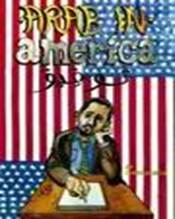
For many in the United States, Arab-Americans are an invisible part of the population. Though Arab-Americans as a community have made great contributions to American society in fields from literature to politics to medicine, many Americans know very little about Americans of Arab backgrounds.
Arab history in the United States goes back to the late 1800’s when large numbers of Arab immigrants first began making their journey to a land known simply as “Amreeka”.
Historians generally describe Arab immigration to America in two waves. The first wave took place between 1860 and 1924.The first wave consisted of Lebanese and Syrian, and some Egyptian immigrants. These new immigrants, who were mostly Christian, came to America in search of better opportunities. Even the doomed Titanic, which set sail for America in 1912,had close to a hundred Arab passengers aboard. The majority of Arab-Americans today are descendents of the first wave of immigrants; they are the third or more generation Americans.
The second wave of immigrants followed after World War Ⅱ,caused by political unrest in the Middle East. This second wave of immigrants consists of mainly Arab Muslims(穆斯林)and continues to this day.
Arab-Americans make up 3 million of the population in the United States, according to demographers. And quite different from popular belief, 64 percent of them are American-born. Eighty-two percent of Arab-Americans are US citizens.
Arab-Americans are beyond the national average in both education and income. Education is important among Arab-Americans; 82 percent have high school diplomas, 36 percent have bachelor’s degrees or higher, and 15 percent have graduate degrees. The-median(中位数的)average income among Arab-Americans is $39,580, which is higher than the US average.
小题1:The first wave of immigrants took place because__________.
| A.all Arabs were Christian at that time |
| B.Arabs wanted to gain higher income |
| C.the Second World War broke out |
| D.Arabs wanted to hunt for a better development |
小题2:The writer of this passage mentioned Titanic__________.
| A.to tell us that taking ship at that time was dangerous |
| B.because Titanic became a well-known disaster |
| C.to show us there were many Arabs flocking into America at that time |
| D.to inform us that Arabs are brave enough |
小题3:From the last paragraph we can infer that__________.
| A.Arab-Americans are much more clever than native Americans |
| B.the higher education you receive, the higher income you will get in America |
| C.Arab-Americans are hard-working people |
| D.The-median average income among Americans is $39,580 |
小题4:Which of the following sentences is TRUE?
| A.Arab-Americans have made great contributions to American society only in literature. |
| B.Arab history in the United States is to the early 1800’s. |
| C.The first Arab immigration to America took place between 1860 and 1924. |
| D.Few of Arab-Americans are US citizens. |
小题5: What would be the best title for the text?
| A.Arabs in America. |
| B.The Two Arab Immigration Waves to America. |
| C.Arab-Americans, Contributions to America. |
| D.Arab-Americans, Education and Income. |